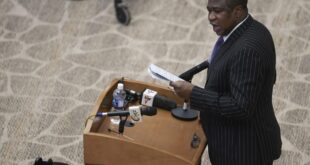FINANCE minister Mthuli Ncube says Zimbabwe is making quarterly token payments to international creditors, including 17 Paris Club members, as the country battles to improve its credit rating.
Currently battling a huge debt overhang which has worsened the country’s sovereign risk profile, the authorities in Harare have been left with few options except seek debt forgiveness and bridge financing from potential sponsors.
“We have begun the process of making token payments to international financial institutions,” Ncube told The NewsHawks on Monday.
Official figures show that as at 31 December 2021, Zimbabwe’s total public and publicly guaranteed (PPG) debt stood at US$10.7 billion. This represented 72.6% of the country’s gross domestic product.
“We have begun paying token payments to members of the Paris Club, 17 of them. We think this is a good move because we are determined as a government to become a good debtor, not a bad debtor,” Ncube added.
Ncube would not be drawn into saying how much Treasury had paid to foreign creditors but maintained that the government was “making these payments consistently every quarter”.
At the turn of the millennium the US enacted the Zimbabwe Democracy and Economic Recovery Act (Zidera) over Zimbabwe’s worsening human rights record and charges of electoral fraud. Under Zidera, Washington can veto any financial support extended to Zimbabwe by Bretton Woods institutions, most notably the World Bank and International Monetary Fund, if Hara[1]re reneges on its promise to undertake reforms.
Harare strongly opposes the foreign policy tool, saying it is Washington’s ploy to effect regime change following the controversial land reform programme which saw thousands of white commercial farmers losing swathes of land to locals.
The nation remains in debt distress, battling to access long-term cheap capital from multilateral lenders like the World Bank, African Development Bank and the IMF. With limited budgetary support, Zimbabwe has over the years relied on internal resources and loans with usurious interest rates to finance some of its critical projects. Following several failed attempts to settle the ballooning debt such as the Zimbabwe Accelerated Arrears Debt and Development Strategy (ZAADS) and later the Lima Plan of 2015, Zim[1]babwe, according to the IMF, is now pursuing the HIPC model, which during the Government of National Unity was frowned upon by Zanu PF.
During the tenure of the power-sharing government which comprised Zanu PF and two MDC factions, hawkish Zanu PF politicians rejected proposals made by then Finance minister Tendai Biti to pursue the HIPC initiative, arguing that the country was not poor.
AFDB president Akinwumi Adesina heads to Zimbabwe next month after pledging to champion the country’s plan to clear arrears with the regional lender. NewsHawks
 Nhau News Online News that is accurate, reliable, trustworthy!!
Nhau News Online News that is accurate, reliable, trustworthy!!
